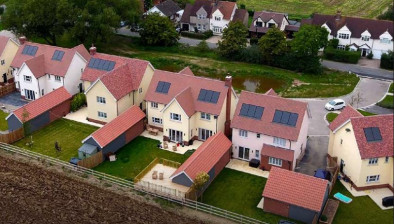Study examines relationship between the physical and social environment and walking
 Features of the physical and social environment which are related to increased levels of walking in deprived communities are the subject of a new study from research and learning programme GoWell.
Features of the physical and social environment which are related to increased levels of walking in deprived communities are the subject of a new study from research and learning programme GoWell.
The idea of creating environments which encourage people to be active – rather than restrict opportunities for physical activity – is generating greater interest in academia and policy. The idea of designing ‘healthy towns’ or leveraging regeneration activities to create walkable neighbourhoods has also received public support.
This study used data from the first wave of the GoWell survey and data from a neighbourhood street audit which was also conducted in 2006. Survey data provided information on respondents’ perceived social support, safety, cohesion and social interaction and feelings of trust and empowerment to make decisions in the community.
Neighbourhood audit data recorded information on the aesthetics and maintenance and disorder (e.g. graffiti, litter) of the streets, housing and buildings surrounding respondents’ home addresses. Using the survey data, GoWell was also able to estimate the proportion of respondents who frequently walked in their neighbourhood (i.e. for at least 20 minutes on 5 days of the week).
Across 5,923 respondents in 14 GoWell neighbourhoods in Glasgow, less than a third (29%) frequently walked in their neighbourhood. Analyses found that respondents were most likely to walk frequently when they had more social support and lived in a community with higher levels of social interaction, cohesion and safety and which had aesthetically-pleasing and well-maintained built form and open space.
Physical disorder and perceived trust and empowerment were not significantly related to walking. Interestingly, interaction analyses revealed that features of the social and physical environment worked together: for example, levels of walking were highest when a neighbourhood had both high levels of social interaction and aesthetically-pleasing built form. Associations between the environment and activity were broadly similar for self-reported moderate physical activity which didn’t have to be performed in the local neighbourhood.
Findings suggest that when considering what makes a walkable neighbourhood, it might be most valuable to examine both the social and physical environment, rather than focussing on the physical features of the community.
This research was led by Alexia Sawyer, a PhD researcher at University College London (UCL) who is partly funded by Glasgow Centre for Population Health (GCPH). The research was supported by a team of researchers from GoWell, GCPH and UCL. The results from this study have been published in PLoS One in a recent open-access article.









